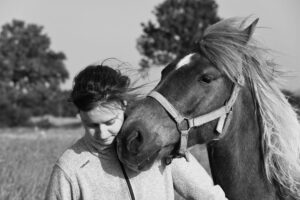
Selling Your Perfect Horse: Selling a horse can be a significant milestone in a horse owner’s journey. Whether you have decided to move on to a different equine partner or circumstances require you to part ways with your beloved companion, it’s essential to approach the selling process with care and consideration. This comprehensive guide will provide you with valuable insights and practical tips to help you navigate the horse-selling journey successfully.
- Preparing Your Horse for Sale:
Before listing your horse for sale, it’s crucial to ensure that they are in their best possible condition, both physically and mentally. Consider the following steps:
1.1. Health Assessment: Have your horse thoroughly examined by a veterinarian to address any health issues or concerns. This step will provide potential buyers with confidence in the horse’s well-being.
1.2. Grooming and Presentation: Ensure your horse looks their best by providing regular grooming sessions. Presenting your horse in a clean and well-maintained condition can make a significant difference in attracting potential buyers.
1.3. Training and Riding: Invest time in further training and riding your horse to maintain or enhance their skills. This will not only showcase their abilities but also demonstrate your commitment to their development.

- Determining the Right Price:
Pricing your horse appropriately is crucial to attract serious buyers. Consider the following factors when determining the price:
2.1. Market Research: Conduct thorough research to understand the current market trends and prices for horses similar to yours. This will help you set a realistic and competitive price.
2.2. Horse’s Age, Breed, and Training: Consider your horse’s age, breed, and level of training when determining the price. Younger horses with extensive training typically have a higher value compared to older or untrained horses.
2.3. Evaluation by Professionals: Seek the expertise of knowledgeable horse professionals, such as trainers or equine appraisers, to evaluate your horse objectively. Their input can provide valuable insights into pricing your horse accurately.
- Creating an Effective Advertisement:
Crafting an engaging advertisement is essential to attract potential buyers. Consider the following tips:
3.1. Accurate Description: Provide a detailed and accurate description of your horse, including their age, breed, height, temperament, training level, and any notable accomplishments. Be honest and transparent about their strengths and limitations.
3.2. High-Quality Photos and Videos: Capture high-resolution photos that showcase your horse’s conformation, movement, and any additional qualities that make them stand out. Videos of the horse being ridden or performing specific skills can further enhance the advertisement’s appeal.
3.3. Clear Contact Information: Include your contact information in the advertisement, such as phone number or email, so interested buyers can easily reach out to you with inquiries.

- Marketing Your Horse:
To maximize your horse’s exposure to potential buyers, consider the following marketing strategies:
4.1. Online Platforms: Utilize reputable online platforms, such as horse-specific websites, social media groups, and forums, to advertise your horse. These platforms provide a wide reach and attract horse enthusiasts actively searching for their next equine partner.
4.2. Word of Mouth: Inform your local equestrian community, trainers, and horse enthusiasts about your horse’s availability. Word of mouth can be a powerful tool in reaching potential buyers.
4.3. Print Media: Consider placing advertisements in horse-related magazines or local newspapers. Although online platforms dominate the market, print media can still attract interested buyers.
- Screening Potential Buyers:
Once potential buyers start expressing interest, it’s crucial to screen them carefully to ensure your horse goes to a suitable home. Consider the following steps:
5.1. Initial Communication: Engage in thorough conversations with potential buyers to understand their experience level, intentions, and suitability as a horse owner. Ask questions about their riding abilities, previous horse ownership, and future plans for the horse.
5.2. Meet in Person: Arrange a meeting where potential buyers can interact with your horse personally. Observe how they handle the horse, assess their skills, and gauge their compatibility with the horse’s temperament.
5.3. Vet Checks and Trial Periods: If a potential buyer shows serious interest, consider allowing a veterinarian to conduct a pre-purchase examination. Additionally, a trial period can help ensure compatibility between the buyer and the horse before finalizing the sale.
- Completing the Sale:
Once you have found the perfect buyer for your horse, it’s essential to complete the sale appropriately:
6.1. Sales Agreement: Draft a sales agreement outlining the terms and conditions of the sale, including the purchase price, payment terms, and any additional agreements or guarantees.
6.2. Transfer of Ownership: Ensure the transfer of ownership is completed correctly, including updating registration papers, microchip information, and any other necessary documentation.
6.3. After-Sale Support: Maintain open lines of communication with the new owner and offer support during the transition period. This gesture will help establish a positive relationship and ensure the horse’s well-being.
Conclusion:
Selling your perfect horse can be an emotional and challenging process, but with careful preparation and a strategic approach, you can find the ideal buyer who will appreciate and care for your equine companion. By following the steps outlined in this guide, you’ll be well-equipped to navigate the selling process successfully, ensuring a smooth transition for both you and your horse. Remember, finding the right home for your horse is a rewarding experience that sets the stage for new beginnings and future equestrian adventures.






